Today we accept turbocharged engines as an integral part of automotive technology, but in 1962, it seemed to be the stuff of science fiction. This perception was undoubtedly helped by automotive manufacturers adding some pretty impressive labels to the components that were all part of this emerging technology. General Motors was at the forefront of this new way of thinking, and in 1962, they released the Oldsmobile F-85 Jetfire. Today, finding a largely original and unmolested example is getting difficult due to reasons that we will cover shortly. This 1962 Jetfire looks like it could be a really great one, and is just begging for someone to return it to its best. It is located in Shreveport, Louisiana, and has been listed for sale here on Craigslist. The owner has set the asking price for the Olds at $12,500. I have to say a big thank you to Barn Finder Ikey H for referring this ground-breaking classic to us.
Finished in Wedgewood Blue with a Provincial White flash down the sides, the Jetfire must have been a pretty attractive looking car when new. Today, it shows its age, but the overall news seems to be quite good. The Olds has spent the vast majority of its life in California, and as a result of this existence, it appears to be free of any significant rust issues. The lower external areas such as the rear quarter panels, rockers, and the lower fenders all seem to be solid. There are no shots of the vehicle’s underside, but a lack of carpet inside the car gives us a pretty good look at the floors, and they look to be very clean. All of the external trim and chrome appears to be present, and it seems to generally be in good condition. The exception is the rear bumper because I think that this is bent around the center area. One of my favorite pieces of trim is the twin chrome fins on the hood. Rear fins had disappeared from cars only a few short years before, but these ones just added to the sci-fi mystique of the Jetfire.
What set the Jetfire apart was what was happening under the hood. In a bid to endow the car with improved levels of performance without lumbering it with a bigger, heavier engine, Oldsmobile decided to bolt a Garrett AiResearch turbocharger to the sweet little aluminum 215ci V8, creating the Turbo-Rocket motor. It all sounded great on paper, because this boosted power output from 155hp to an impressive 215hp, while engine torque leaped from 210lbs/ft to a whopping 300lbs/ft. In this case, that power is fed to the rear wheels via a 3-speed automatic transmission, while it also scores with power steering. Sadly, the reality with the Jetfire was not quite as great as it appeared to be in 1962. With the engine blessed with a high compression ratio of 10.25:1, detonation was always going to be an issue. The innovative answer to this was to add what was effectively an injection system that automatically squirted what was referred to as “Rocket Fluid” into the intake. This fluid was a mixture of distilled water, methyl alcohol, and a corrosion inhibitor, and helped to quell the detonation issues. This mixture was held in a special tank, and it was the responsibility of the owner to maintain the fluid level. There was the rub because many owners were unaware of this responsibility, or simply forgot to top-up the tank. This wasn’t the end of the world, because the Jetfire had a fail-safe which reduced turbo boost in these situations to prevent potentially terminal engine damage. However, more than one owner returned there Jetfire to the dealership complaining of a significant loss of performance. In most cases, the dealer topped-up the tank, and the owner went on their merry way. Some owners eventually decided that this was all just too hard, and plenty of Jetfires had their turbo system removed, and had a 4-barrel carburetor substituted. The other key area of criticism surrounded the vehicle’s ride and handling. In standard form, the F-85 had soft and wallowing suspension, and no upgrades were made before the car was endowed with a significant performance increase. Today, that’s an issue that is easy to address, but it is one that Oldsmobile missed in 1962, and it was one that saw the company punished by a large proportion of the automotive press. The 215 under the hood of this Jetfire is freshly rebuilt, but as you can see, it wears a 4-barrel carburetor in lieu of its turbo setup. It isn’t bad news though, because included with the car is not one, but two complete setups, which would allow the next owner to return the car to its original specs. How much difference would it make to performance? Well, a standard F-85 could cover the ¼ mile in 18.4 seconds. The Jetfire could cover the same journey in 16.5. So yeah, it does make a difference.
Looking around inside the Jetfire, I have come to the conclusion that it will take little more than some good cleaning and a new carpet set to return it to its best. The dash and pad look to be both original, and in good condition. The upholstery on the seats and other trim items seems to be free of splits or tears, while what we can see of the headliner also looks to be quite good. As part of the overall package, the Jetfire scored a nice set of bucket seats as standard, along with a console with the shifter and a vacuum gauge for good measure. However, the interior was another area where the Jetfire was criticized by the motoring press at the time. They felt that for a car with such sporting pretentions as this, the Jetfire was let down by a lack of gauges and instruments. Many thought that the vehicle should have at least received a tachometer as standard equipment. They also stated that the vacuum gauge was of little benefit because, being flush-mounted, it was hard for the driver to be able to read it. Still, it is what it is, and I wouldn’t change a thing if I were to buy it.
The Oldsmobile Jetfire was a car that could deliver impressive performance in 1962, but the simple task of having to top-up the “Rocket Fluid” tank saw it fall out of favor with many buyers. Only 3,765 examples were sold in 1962, and after a similar showing in 1963, Oldsmobile took the decision to drop the engine from its lineup. With many owners choosing to swap the turbo setup for a conventional carburetor, finding a complete car today is not an easy task. In fact, there is some conjecture amongst various sources that there are now only around 20 Jetfires with the turbo still active on our roads today. With good original or nicely restored examples now capable of achieving values in excess of $40,000, this would appear to be a project car that is well worth the asking price.
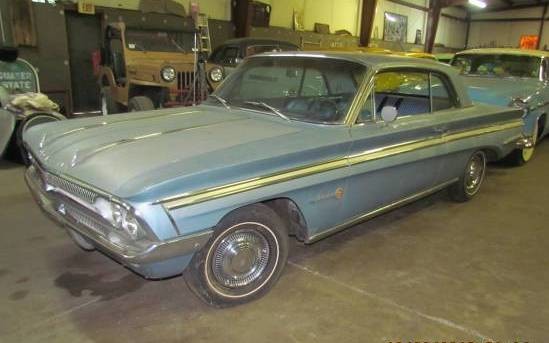
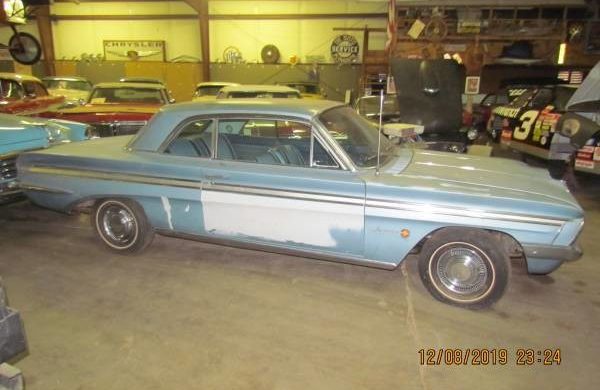
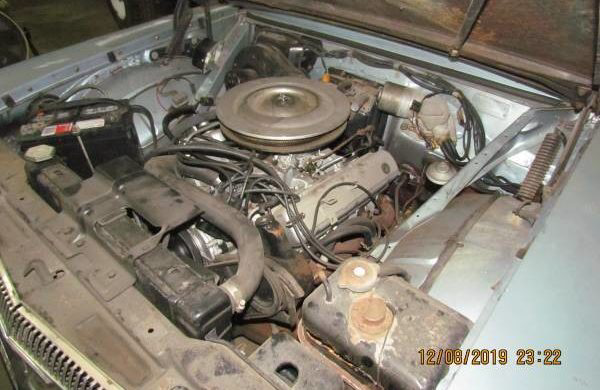
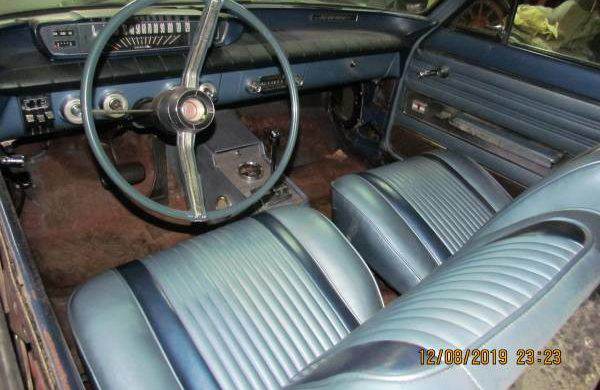
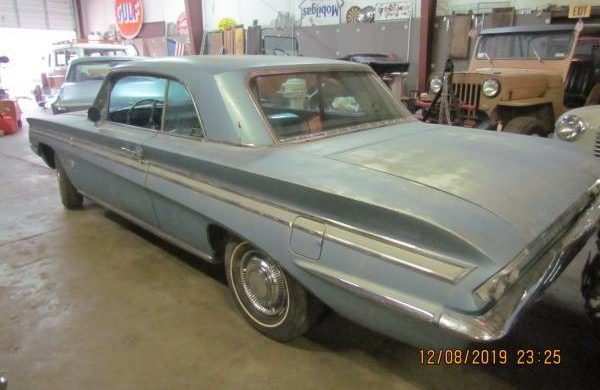
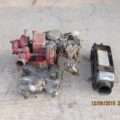
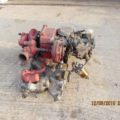
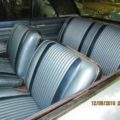




Couldn’t even read that. I am slow.
Some owners took it upon themselves to do the non-turbo conversions. However, most were converted in 1965, when Oldsmobile offered the conversion at no cost as a “goodwill” action in response to customer complaints. This is why it’s difficult to find a fully functional Jetfire. It’s much like finding an 81-83 Imperial with its fuel injection system intact.
“It’s much like finding an 81-83 Imperial with its fuel injection system intact.”
Yes, another great innovation that s*cked.
Good read and interesting car. This would clean up nice.
Interesting car that should be restored to factory specs. It’s a solid car with a decent interior and a freshly re-built engine. With a fresh paint job, new carpet, rear bumper and then installing the turbo setup, you’ll have a very nice car that should perform well. Probably worth the ask, especially with two turbo setups thrown in.
I’d like to take that one on, another mechanical once-over, clean and wax it as is, and get a carpet set from JC Whitney. Oh, who am I kidding haven’t picked a random car up and done that in over 40 years…why do today’s interesting projects all seem to cost at least a year’s worth of mortgage payments?
Buy it. Get a decent paint job and drive it.
You could sell those two turbos and cover the costs.
Nice car! I have 3 of these engines ( non turbo)and they are well engineered. Great transplant for a sports car. These engine weigh 270lbs full dress with oil.
You can by intakes and cams for them as they were later adopted by Triumph (tr7) as well range Rover in slightly larger displacement in later years…way ahead of it’s time. Great write up.
Steffon, My nephew has this power plant in his 1979 MGB…It is an awesome set up…So much lighter than the original MGB engine….
I love 1962 GM Olds 215 ci aluminum engine this one is a fantastic option … top for the time when launched at automotive market !!
Many years a head from Porsche when they said the first domestic turbo car in 1976 !!!
I have one Olds 215 ci (no turbo) in my project car , and i intent to make it turbo with today equipments .
Even ignoring the Jetfire and Corvair Spyder, if Porsche had claimed that, it would have been a lie. The BMW 2002 Turbo was introduced in 1973 as a ’74 model.
The mid-year introduction of the ’62 Jetfire was in April 1962, not sure when deliveries began. The ’63 probably enjoyed a full year of production, 5,842 made. Almost 2,000 better than Adam’s claim of “…a similar showing in 1963…”.
Sorry, Adam, unless an unwitting owner painted a “Provincial White flash down the sides”, the indented side trim you’re looking at is embossed aluminum trim similar to what the big brother Starfire used. And although I guess you could call the trim on the hood “fins”, I always called them windsplits. (The Cutlass had a single windsplit.) If you’re of a mind to do a little customizing, the trim from the rear fenders of a ’62 Pontiac Tempest Le Mans would fit on the Cutlass/Jetfire fenders. The first foot or so, starting from the back was die cast, the rest (about 4′) was stainless trim. You would be correct calling those (baby) fins. When I was restoring my Jetfire, I wheedled a ride from the only person I knew that had a running example. He was a poor college student with little means to improve the performance, but I couldn’t believe how slowly the automatics in these shifted. When a friend found the correct Jetfire 4 speed console hanging on a parts yard wall in Alabama, it became a mission to find a correct B-W T-10 to go with it. Unfortunately, had to sell the car before I saw how much an improvement the four speed would have made.
I put one of these engines in a garden tractor and also crafted one into a pontoon boat I/O…needless to say I am a fan. Wish I could post a photo.
I had comp cams grind me a wild cam and used sbc conical valve springs upside down on the little olds heads…port matched and built some headers…really strong runner, and light
“Wedgewood Blue”? Really? I dunno if this has been “Americanized”, but the color is Wedgwood Blue”, no “e”.
Really interesting read and lots of good information that I wasn’t aware of!! Good write up Adam!! I would see this car unfortunately with the motor out and a different power plant under the hood!! Just due to the problem of restoration to set this up the way it was!!!